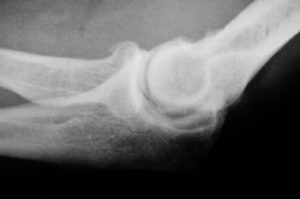Written by mr. Ioannis Vosinakis, Orthopedic Surgeon, Scientific Head of the Orthopedic Department of the ANASSA Clinic.
Elbow arthroscopy is a technically demanding operation, mainly due to the complex anatomy of the area, which includes many noble elements (vessels and nerves) which are at risk during the creation of the arthroscope and instrument inputs into the joint. In addition, the small size of the joint necessitates the use of an arthroscope and smaller diameter tools. For the above reasons, elbow arthroscopy is performed more rarely and with strictly specific indications by specialized orthopedic surgeons. These indications include:
- Hymenectomy in inflammatory arthritis
- Cleansing in septic arthritis (pus) or osteoarthritis (osteophytes, free bodies)
- Release pouch to deal with contraction
- Treatment of osteochondral fractures and deficits or aid in reduction of epiphyseal fractures
At the ANASSA clinic, the Orthopedic Surgeon Mr. Ioannis Vosinaki, the first elbow arthroscopy in Magnesia. The 48-year-old patient suffered from severe, chronic left elbow stiffness (only 80 degrees of flexion but full extension). Radiologically, the presence of osteophytes in the coronoid process and the coronoid fossa was found, which limited bending due to impact (radiography 1).
The osteophytes were the result of an old injury (post-traumatic arthritis). Arthroscopy was performed only on the anterior part of the joint, as there was no pathology in the olecranon and olecranon fossa. During the arthroscopic surgery, the osteophytes were removed (x-ray 2), resulting in the flexion exceeding 120 degrees.
The final result is highly satisfactory and the patient, without complications, was discharged the next day and followed a successful physiotherapy program to maintain the new range of motion.

